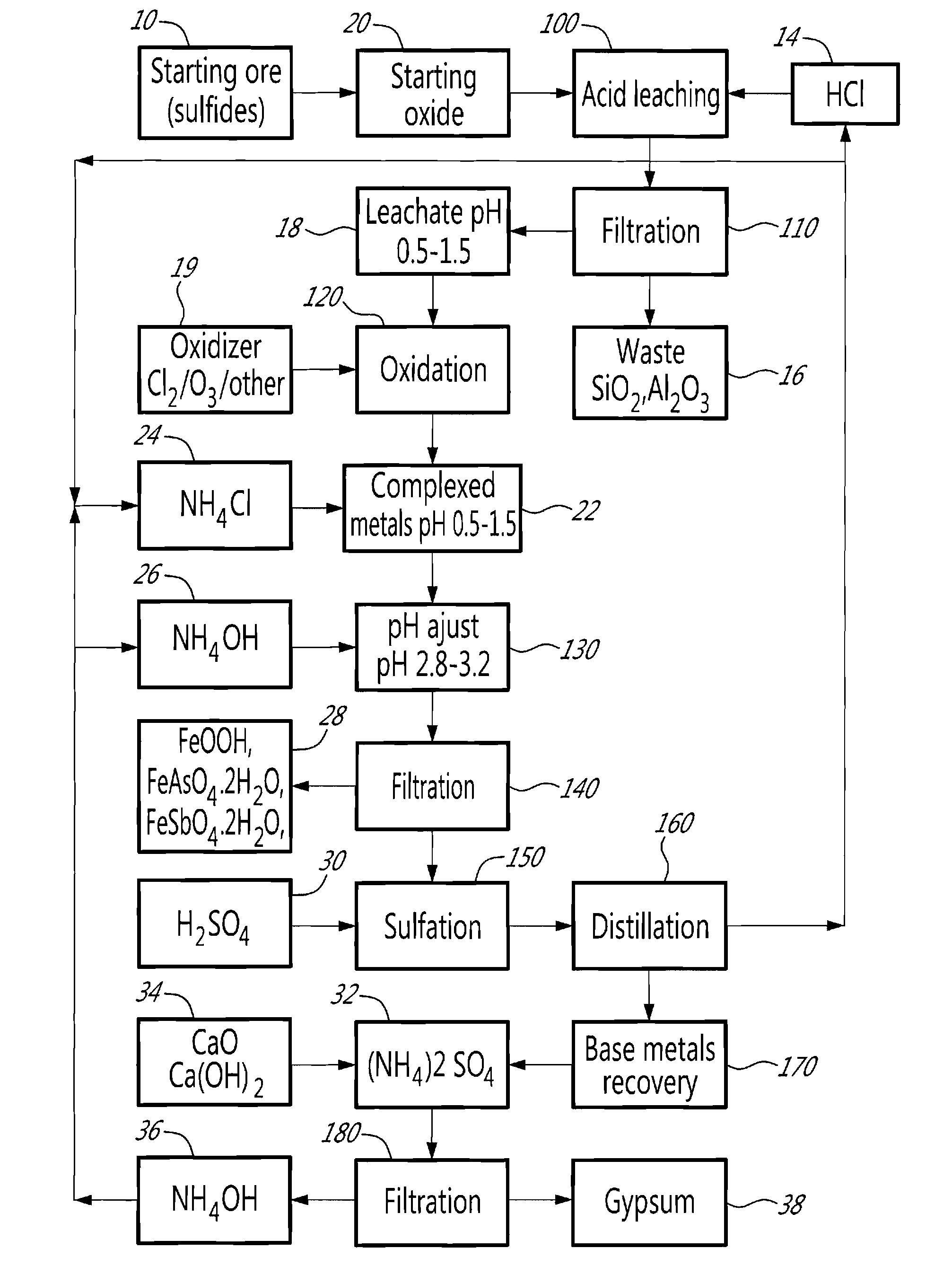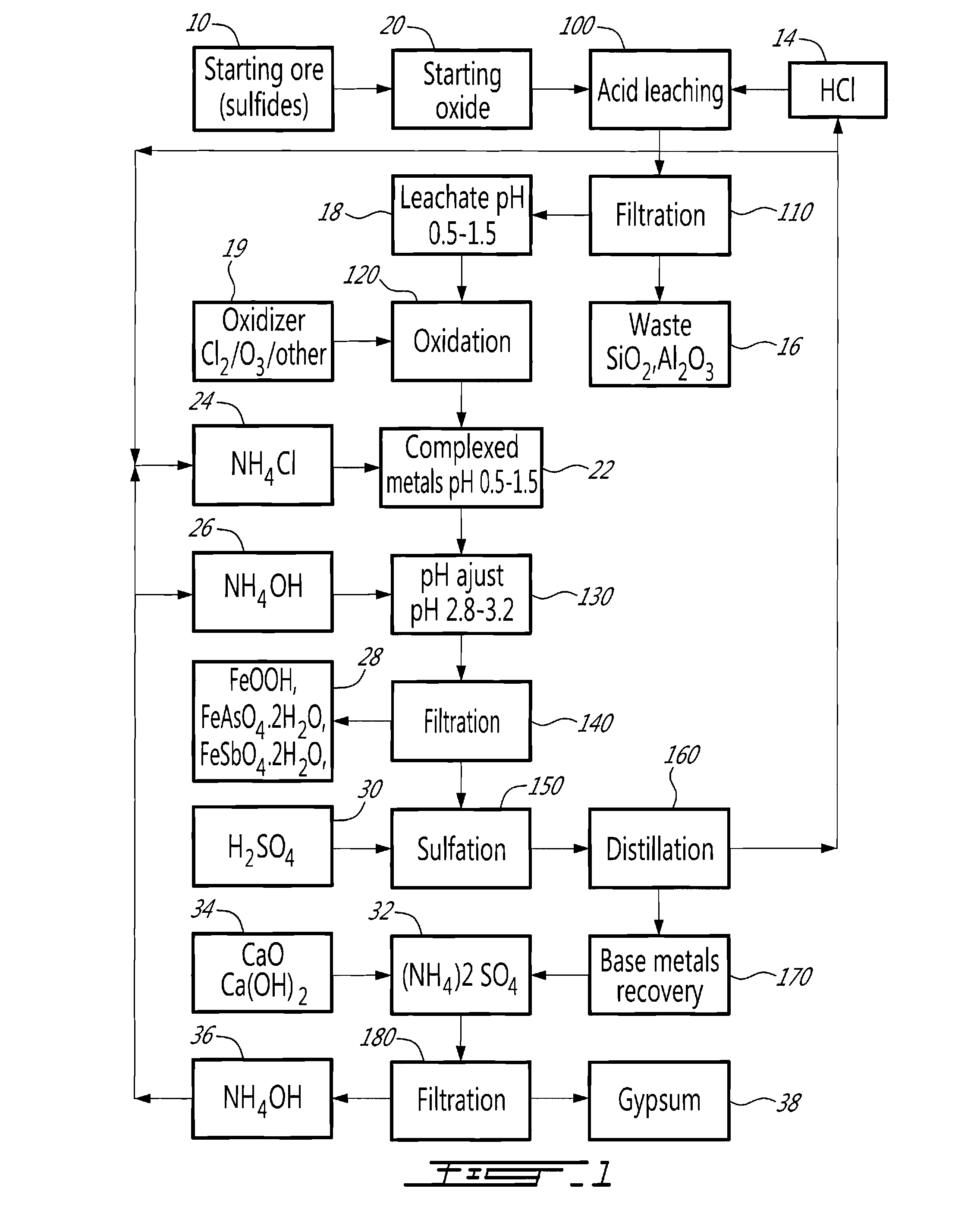Method for selective precipitation of iron, arsenic and antimony
a technology of arsenic and antimony and selective precipitation, which is applied in the field of hydrometallurgy, can solve the problems of creating interference, ph adjustment represented a very delicate step, and control, although possible at a small scale, becomes nearly impossibl
- Summary
- Abstract
- Description
- Claims
- Application Information
AI Technical Summary
Benefits of technology
Problems solved by technology
Method used
Image
Examples
Embodiment Construction
[0011]The method will be described in relation to an embodiment illustrated in FIG. 1.
[0012]There exists a large variety of polymetallic ores (10, 20) that fall within the scope of the present invention, i.e. which present a problem for the separation of base metals when submitted to extractive hydrometallurgy. Such ores can be naturally occurring oxides, such as a nickel-bearing laterite for example, sulfides, such as an arsenopyrite, or arsenites.
[0013]In the case of a sulfurated starting ore (10), i.e. sulfides or arsenites, by controlled oxidation, the starting ore (10) may be oxidized to reduce the sulfur content to less than 0.5%, using known technologies, so as to transform it into a mixture of oxides (20). Typically, such a mixture of oxides (20) contains CuO, CoO, NiO, ZnO, FeO and Fe2O3 associated with silica or aluminosilicates of Na and other alkali. Arsenic and antimony may also be present as trivalent oxides. In several instances, the base metals are accompanied by pre...
PUM
| Property | Measurement | Unit |
|---|---|---|
| Acidity | aaaaa | aaaaa |
Abstract
Description
Claims
Application Information
 Login to View More
Login to View More - R&D
- Intellectual Property
- Life Sciences
- Materials
- Tech Scout
- Unparalleled Data Quality
- Higher Quality Content
- 60% Fewer Hallucinations
Browse by: Latest US Patents, China's latest patents, Technical Efficacy Thesaurus, Application Domain, Technology Topic, Popular Technical Reports.
© 2025 PatSnap. All rights reserved.Legal|Privacy policy|Modern Slavery Act Transparency Statement|Sitemap|About US| Contact US: help@patsnap.com


